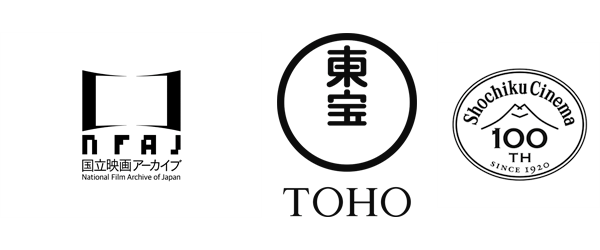SPOILER WARNING The following notes give away some of the plot.
‘Though Sadao Yamanaka made only a handful of films,’ wrote the late Donald Richie, ‘his infuence has been great. Without him there would have been perhaps no Ugetsu, certainly no Rashomon. He was among the first… to see the past in terms of the present and to see it undistorted.’ Yamanaka’s directorial career lasted a mere six years; after directing his final flm, Humanity and Paper Balloons, in 1937, he was drafted into the army (as punishment, Noël Burch suggests, for his left-wing views) and sent to China, where he died of dysentery, aged 29.
Of the 27 films he directed (or in two cases co-directed) in those six years, only three are known to survive. On the basis of these three films (all scripted by his friend Shintarô Mimura), Yamanaka’s interest lay in the lower depths: the marginalised members of society scraping a precarious living by means ranging from the just-about-honest to the downright criminal. Following the example of his mentor, the director Daisuke Ito, his work fell into the category of keikoeiga (‘tendency films’) – socially conscious, left-leaning movies, often tempered with humour, that exploited the conventions of the jidai-geki (period film) to level indirect criticism at contemporary Japanese society.
Yamanaka could have taught Godard a lot about jump cuts. He often cuts without warning from one conversation to another, suggesting a degree of moral equivalence between all his characters whatever their motives. Sets are crowded and cluttered, authentically grimy, underlining the enforced intimacy of these shantytown dwellings where open sewers run behind the huts. Humanity and Paper Balloons, Yamanaka’s swansong, starts with a ronin’s suicide and ends with the death of another at the hands of his wife. But even here humour intrudes: a blind man whose pipe is stolen waits for the thief to fit a new stem before snatching it back. And a barber who runs an illegal gambling den, a seemingly sleazy character, attains a perverse nobility when he defies a gang boss. In Yamanaka’s world, redemption is sometimes attainable – if only in defeat.
Philip Kemp, Sight & Sound, July 2013
In the thirties, before Mizoguchi, Kurosawa or Yoshimura looked to the past, Sadao Yamanaka was the only director consistently to bring an adult viewpoint to stories with a historical setting. Unlike this later trio, who found their material outside the usual territory of the jidai-geki, Yamanaka worked with the very stuff of which common sword operas are made. To him, however, the pre-Meiji era was not the usual romantic idyll but an age with its own human problems. This was heresy-not only to the popular mind but to those militarists for whom the golden age of bushido, ‘the way of the samurai’, was the road to Greater East Asia.
Yamanaka’s objectives went beyond simple historical reconstruction, which to him meant merely cinematic trompe l’oeil. His interest in the life of the past was governed by a desire to show not only its physical appearance but the emotions out of which it was made. His dialogue, far removed from sword opera conventions and yet not too close to actual speech, aimed at the poetic. He was one of the relatively few directors able to focus on speech without sacrificing visual elements.
Although Yamanaka was in part a debunker, his attitude was realistic rather than openly satirical. His 1937 production Humanity and Paper Balloons opens with a characteristic sequence. The setting is an Edo tenement. One of the tenants, a ronin (samurai no longer in a lord’s retinue, and hence without livelihood) has committed suicide. His townsmen friends lament his death, but one romantic is disappointed: ‘He hanged himself like a merchant. Where was the man’s spirit of bushido? Why didn’t he disembowel himself like a real samurai?’ And the reply comes: ‘Because he no longer owned a sword. He sold it the other day for rice.’ This is the familiar death-theme opening of so many jidai-geki, but a startling variation on the outnumbered samurai who comes to a glorious end taking 20 enemy swordsmen with him.
That night the dead ronin’s sorrowing friends find happiness at his funeral: drunken wakes are the only luxury of their miserable lives. At the wake Yamanaka introduces these tenement dwellers one by one and the film develops into vignettes of their daily lives: the goldfish seller, the blind masseur, the street gambler, the noodle seller and, more particularly, another ronin and his wife. This is the celebrated Golden Age of the 18th century, but the people of this tenement are not part of its flourishing of the arts or its celebrated zest for living. The ronin, like his fellow tenants, searches daily for work while his wife endlessly makes paper balloons. This samurai lives not by bravado but by the small change received from the sale of toys to children. One day he accidentally becomes involved in a kidnapping unsuccessfully attempted by a friend. The next morning his wife’s paper balloons are blowing out into the courtyard. The tenants look in the couple’s room; the ronin and his wife have committed suicide. Once more a funeral; once more brief escape in the flowing wine of a wake.
Yamanaka, like almost every major Japanese director who got his start before the war, was under 25 when he directed his first feature. His career, which began in 1932, was cut short when he entered the army after the release of Humanity and Paper Balloons. He died in action on the central China front a year later at the age of 29.
J. L. Anderson, ‘Seven from the Past: Aspects of the Pre-war Japanese Cinema’, Sight and Sound, Autumn 1957
HUMANITY AND PAPER BALLOONS
(NINJÔ KAMI FÛSEN)
Director: Sadao Yamanaka
Production Companies: Photography Chemical Laboratory, Zenshin-Za Corporation
Screenplay: Shintarô Mimura
Director of Photography: Akira Mimura
Set Designers: Sentaro Iwata, Kazuo Kubo
Music: Tadashi Ôta
Cast
Chojuro Kawarazaki
Ganemon Nakamura
Tsuruzo Nakamura
Choemon Bando
Sukezo Suketakaya
Shizue Yamagishi
Noboru Kiritachi
Emitaro Ichikawa
Japan 1937
86 mins
Supported by

In partnership wtih

With special thanks to

With the kind support of:
Janus Films/The Criterion Collection, Kadokawa Corporation, Kawakita Memorial Film Institute, Kokusai Hoei Co. Ltd, Nikkatsu Corporation, Toei Co. Ltd
BFI SOUTHBANK
Welcome to the home of great film and TV, with three cinemas and a studio, a world-class library, regular exhibitions and a pioneering Mediatheque with 1000s of free titles for you to explore. Browse special-edition merchandise in the BFI Shop.We're also pleased to offer you a unique new space, the BFI Riverfront – with unrivalled riverside views of Waterloo Bridge and beyond, a delicious seasonal menu, plus a stylish balcony bar for cocktails or special events. Come and enjoy a pre-cinema dinner or a drink on the balcony as the sun goes down.
BECOME A BFI MEMBER
Enjoy a great package of film benefits including priority booking at BFI Southbank and BFI Festivals. Join today at bfi.org.uk/join
BFI PLAYER
We are always open online on BFI Player where you can watch the best new, cult & classic cinema on demand. Showcasing hand-picked landmark British and independent titles, films are available to watch in three distinct ways: Subscription, Rentals & Free to view.
See something different today on player.bfi.org.uk
Join the BFI mailing list for regular programme updates. Not yet registered? Create a new account at www.bfi.org.uk/signup
Programme notes and credits compiled by the BFI Documentation Unit
Notes may be edited or abridged
Questions/comments? Contact the Programme Notes team by email

